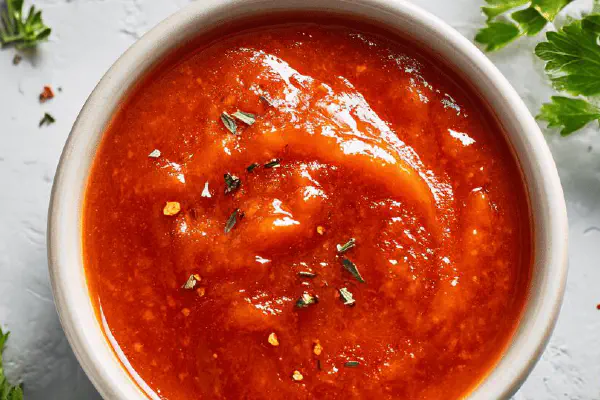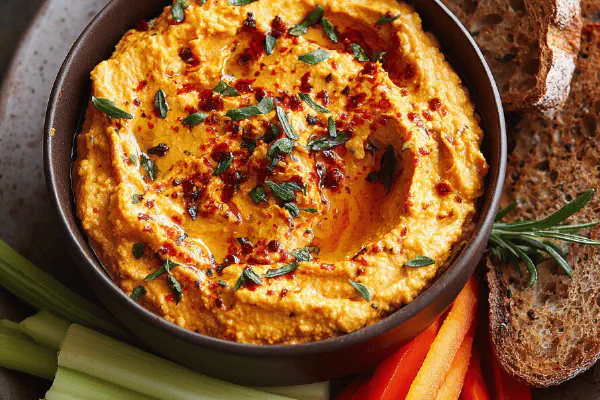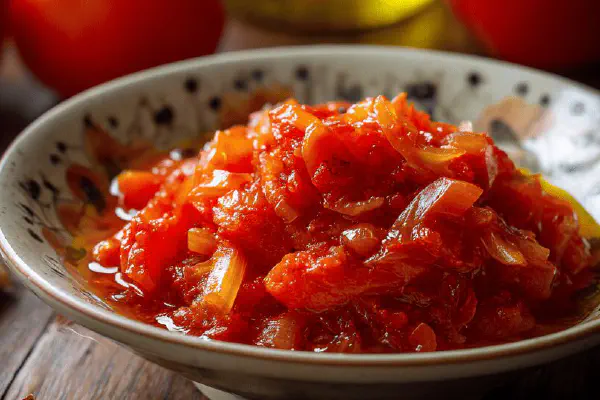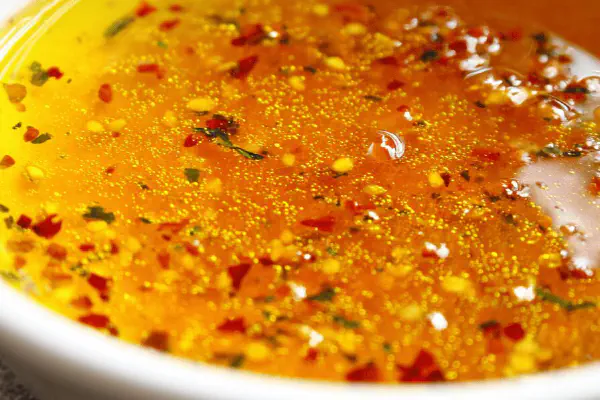Red Pepper Tomato Sauce
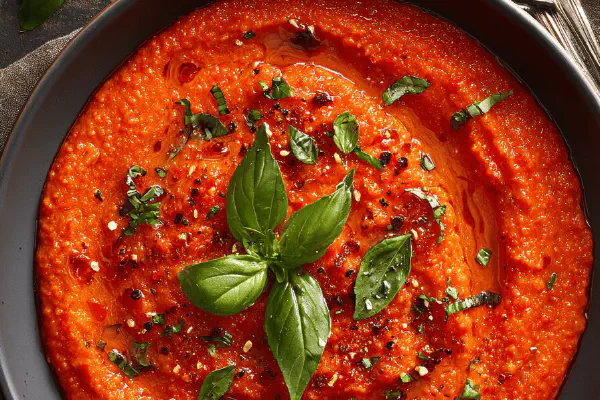
By Emma
Certified Culinary Professional
Ingredients
- 1/3 cup finely chopped onion
- 2 tbsp olive oil
- 1 large red bell pepper, chopped
- 3 garlic cloves, minced
- 1 tsp brown sugar
- 1 tbsp sherry vinegar
- 1 can 540 ml crushed tomatoes
- Salt and freshly cracked black pepper
About the ingredients
Method
- Heat olive oil over medium heat in a heavy-bottomed pot. When oil shimmers, add onions. Listen for sizzle. Stir often. Brown gently until translucent and edges start to caramelize, about 7 minutes.
- Add chopped red pepper, garlic, and brown sugar. Cook, stirring frequently, until peppers soften and the raw edge of garlic is gone. Should smell sweet and savory, not burnt, approximately 6 minutes.
- Pour in sherry vinegar. Stir well. Let the mixture reduce almost dry, watching closely to prevent sticking. This part concentrates flavors; you want the pan nearly wiped clean before moving on.
- Add crushed tomatoes. Season with salt and pepper to taste. Bring to a gentle simmer, then cover partially, lower heat. Simmer for 12 minutes until sauce thickens and deep red color sets in. Stir occasionally. Texture should be a balance between chunky and saucy.
- Transfer mixture to a blender or use an immersion blender. Pulse until the sauce reaches a rustic purée consistency—some lumps OK, total smoothness not necessary. Return to pan and warm through. Adjust seasoning if needed.
- Serve immediately or cool and store refrigerated in airtight container. Reheat gently. If sauce seems too acidic next day, a pinch of sugar or splash of olive oil calms it.
Cooking tips
Chef's notes
- 💡 Heat oil medium low first; listen for shimmering before onions hit pan. Stir often but gentle, edges caramelize not blacken. Smell onion sweetness shift; this is base flavor layering. Timing about 7 minutes but trust scent and color. Chopped fine helps soften evenly without drying or frying fast.
- 💡 Add red pepper and garlic later to avoid bitter burnt notes. Garlic fine minced but can go last if heat too high. Brown sugar helps with sweet balance, melt it into softer peppers but don’t scorch. Stir frequently, peppers soften, no crunchy bits. Around 6 minutes but aromas guide you. Sweet meets savory here.
- 💡 Pour in vinegar slowly, stir to coat evenly. Reduce almost dry. Watch pan closely to avoid stuck sugar or burn. This step sharpens brightness but mellow edges. Nearly wiping pan clean means sugars carmelize lightly, giving subtle depth. Don't skip stirring, smells shift quick. Prefer sherry vinegar but apple cider works if needed.
- 💡 Add crushed tomatoes, salt, pepper now. Bring gentle simmer covered half way to save moisture but allow evaporation. Texture thickens, color deepens to red ruby. Stir occasionally; sauce should cling not run. Timing 12 minutes typical; watch surface for tiny bubbles and skin forming edges as cues. Rustic, chunky body preferred over soup.
- 💡 Blend off heat; pulse not puree all. Rustic chunks add texture contrast, some lumps okay. Return to warm gently. Adjust salt last; acidity can punch hard so sugar or olive oil calms. Reheat low heat, stir. Thickens on cooling; add splash water or broth if too dense next day. Store airtight fridge up to 4 days or freeze portions.
Common questions
Can I use red wine vinegar instead?
Yes but flavor sharper, less sweet complexity. Sherry vinegar adds molasses notes. Apple cider vinegar softer alternative but expect mild flavor shift. Adjust sugar to balance.
How to avoid burnt garlic taste?
Add minced garlic later in cooking or lower heat. Garlic burns fast, bitter if overheated. Stir quickly when added. Some add last minute after peppers soften; others use garlic powder if needed.
Sauce too acidic next day?
Add pinch sugar or splash olive oil and reheat slowly. Sugar cuts acidity but not too much or sauce loses brightness. Olive oil adds silkiness and calms acid. Can dilute with water or broth if needed.
Storage and reheating tips?
Keep refrigerated airtight jar up to 4 days; freeze in portions for months. Reheat low, stir often to prevent scorching. Sauce thickens as cools; add splash water or broth on reheating to loosen texture.
